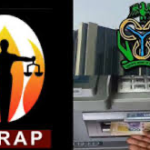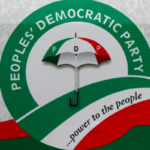President Trump moved to obliterate the outer bounds of executive power Monday, igniting a series of constitutional showdowns that could curtail — or enable — his vision for a maximalist second term.
Why it matters: Within hours of taking office, Trump dared the courts, Congress and his fragmented opposition to stand in the way of what could be his most enduring legacy: a radical expansion of presidential power.
- He did so publicly and with a flourish — signing an initial batch of executive orders in front of a roaring crowd at Capitol One Arena, before returning to the White House.
- There, Trump signed a barrage of executive orders, announced that Canada and Mexico are likely to face 25% tariffs beginning Feb. 1, and pardoned roughly 1,500 Jan. 6 defendants.
Trump also commuted the sentences of 14 Oath Keepers and Proud Boys convicted of seditious conspiracy— an extraordinary act of clemency for far-right extremists who sought to overthrow the government on Jan. 6.
- Many of the Jan. 6 defendants — targeted in the largest Justice Department investigation in U.S. history — were sentenced by Trump-appointed judges.
- “They’ve already been in jail for a long time,” Trump said when asked if there should be any punishment for supporters who attacked police officers. “These people have been destroyed.”
Zoom in: One of Trump’s Oval Office executive orders stands out for its ambition and audacity: a declaration ending birthright citizenship for the children of undocumented immigrants.
- Birthright citizenship is enshrined in the Constitution, but Trump’s order seeks to “clarify” the language in the 14 Amendment to exclude undocumented immigrants.
- The ACLU and other immigrant rights groups already are planning to sue to block the executive order, and legal experts widely expect it to be struck down by the courts.
Still, new evidence has emerged to suggest that Trump — emboldened by his historic political comeback and a record-high approval rating — may be willing to circumvent or openly defy U.S. law in his second term.
- Trump has refused, for example, to enforce the U.S. ban on TikTok — despite the law passing with the support of over 80% of Congress, and being unanimously upheld by the Supreme Court.
- Instead, he signed an executive order — without citing any legal authority — giving himself “the right” to find a buyer or ultimately ban the Chinese-owned app in 75 days.







